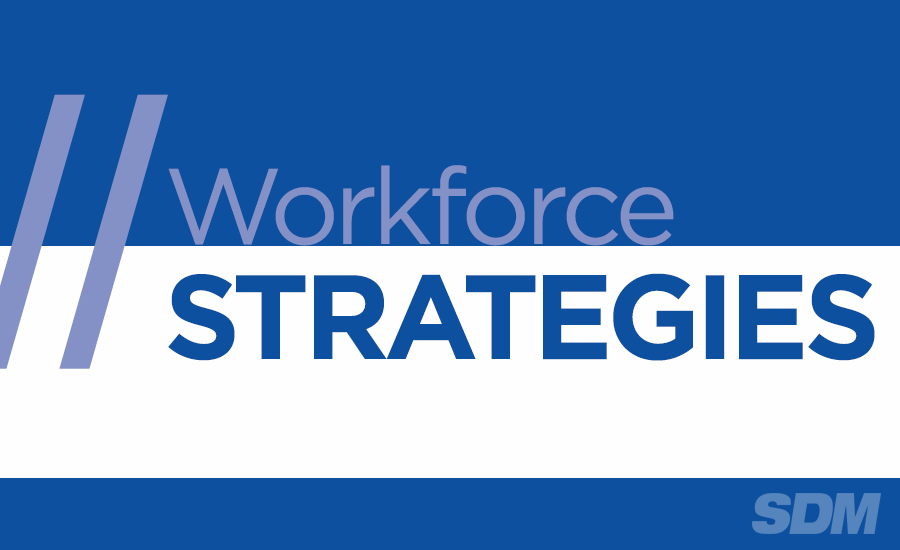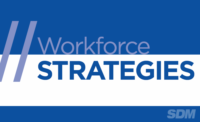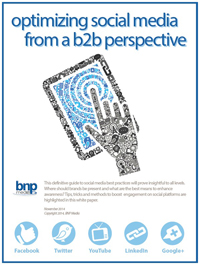5 Tips for Optimizing Your Workforce

Coming off a bit of travel (ISC West, PSA TEC and other events), I wanted to share in this month’s column a few of the best tips and lessons I’ve heard or picked up along the way. The five tips in this months’ column are about workforce optimization. Sometimes optimization means using the right people for the right job, in other cases it’s putting the right people in the right place for them to grow and sometimes it’s about focusing your workforce on the most important elements of their roles.
1. Repurpose your employees. No, we’re not talking Earth Day and reduce, reuse, recycle (although we certainly recommend greening your firm when you can). The message here, rather, is to analyze your employees and consider whether you’re underutilizing some of their talents and whether you can “repurpose” one employee into a better use of their talents.
We picked up this idea from Brad Malone of Solutions360, who recommends approaching employee optimization from a “lean” model (in the lean theory of business process and culture, the mission is all about eliminating waste, streamlining process and reducing variation). One of the ways “waste” occurs in an organization is if some employees are just cleaning up other employees’ waste (OK, this is obviously not literal language; we’re talking about “waste” like errors in your product or service). Instead, you should streamline the process to eliminate the “waste,” and then you’re able to retask that team member onto something more productive.
For example, if you can use lean tactics and improve the quality of your product or the quality of your security installations, does that mean you might need to spend fewer hours on return-trip service calls or fewer hours on customer support, and could that individual instead be working on new installations or grow into the project manager or account executive you need?
2. Focus on your culture, and you’ll improve your hiring and increase your retention. This is something that I hear from a lot of the best companies. You see it in how some bring their culture wherever they go, and that means their employees carry that culture with them, too. And, just maybe, that culture shines through from one of your employees, and in doing so, your employee becomes your hiring ambassador, bringing you new talent who respect the culture you’ve created. Have you ever noticed that the companies you look up to in terms of culture are ones that never have to complain about having a hard time hiring?
3. Recognize that if you can’t point to the problem, you might be the problem. Let’s not be too harsh: You’re not the problem, but it might be one or two of your habits or tactics that are the problem, and if you can fix those, the problem is solved. One of the top management consultants told me the story of working for a company owner who always thought the performance problems were in the sales unit. Ultimately this leader had the self-awareness to recognize that the problem of underperformance and churn of team members was himself, and instead of focusing the management training on sales, he flipped it back to himself. The company, by the way, is now doing really well, so the self-awareness that was needed, coupled with the improvements he was able to make in himself (thanks to the advice of that consultant), really paid off in his workforce and in the company’s profits.
4. Create space for greatness. There are people who want to grow at your organization but who may not ever raise their hand – maybe they feel like impostors or just lack the confidence edge they need. At PSA TEC, Kasia Hanson of Intel and the Security Industry Association (SIA) Women in Security Forum, shared how there is research that indicates that men, for example, are more likely to apply for a role even if they are marginally or not quite qualified, while women are more likely to want to make sure their resumes are perfect before they apply.
The “I’m not ready” mindset can apply, of course, to any employee, and the challenge that you as a leader will face is to have conversations about growth with those team members, so that when you have an opportunity, you know they’re the ones to move into a role, even if they haven’t yet been able to raise their hand and say, “Yes, I’m ready.” Hanson points to the motivational quote: “Stop letting your potential go to waste because you don’t feel ready enough.” Here’s a challenge to you business owners and execs, based on a slightly modified version of that quote: Stop letting your employees’ talent go to waste because they don’t feel ready enough.
5. Embrace AI’s impact and eliminate the drudgery. When you assess the amount of impact that artificial intelligence (AI) has had on our way of thinking in the last four months, it’s impossible to not think it’s going to dramatically change how you leverage your workforce in the next five years. Rather than worry that AI is going to take your jobs, embrace it. Recognize that AI is going to take on your “wasteful,” boring tasks. Some examples I heard from business leaders were that they can’t wait until they can stop answering mind-numbing emails like “What’s the shipping status on my order?” For them, having something like a chatbot answer those questions is a dream come true because it frees them (and their teams) up to do more meaningful work.
Looking for more ways to optimize your workforce and foster your security talent pipeline? SIA has a number of efforts that help advance the security industry and grow the workforce of tomorrow, including partnering with the Electronic Security Association to lead the Foundation for Advancing Security Talent (FAST) (and the FAST 2023 Security Industry Compensation Study), resources like a guide to security industry careers and an employer’s hiring guide, communities geared toward young leaders and women in our industry and efforts to engage with HR professionals and industry stakeholders.
Learn more about these initiatives and offerings and how you can get involved here.
Looking for a reprint of this article?
From high-res PDFs to custom plaques, order your copy today!





.png?height=200&t=1648653164&width=200)


